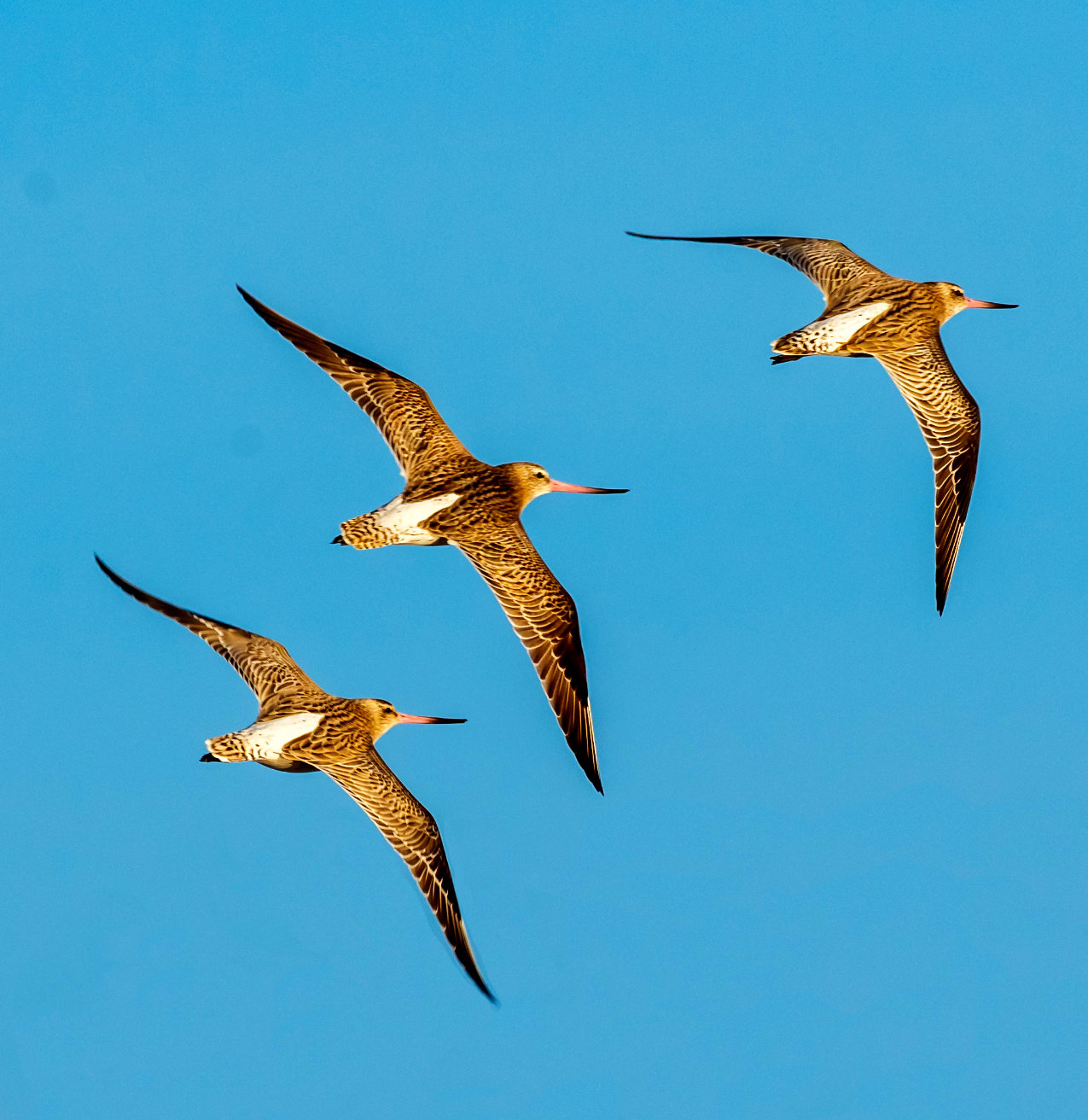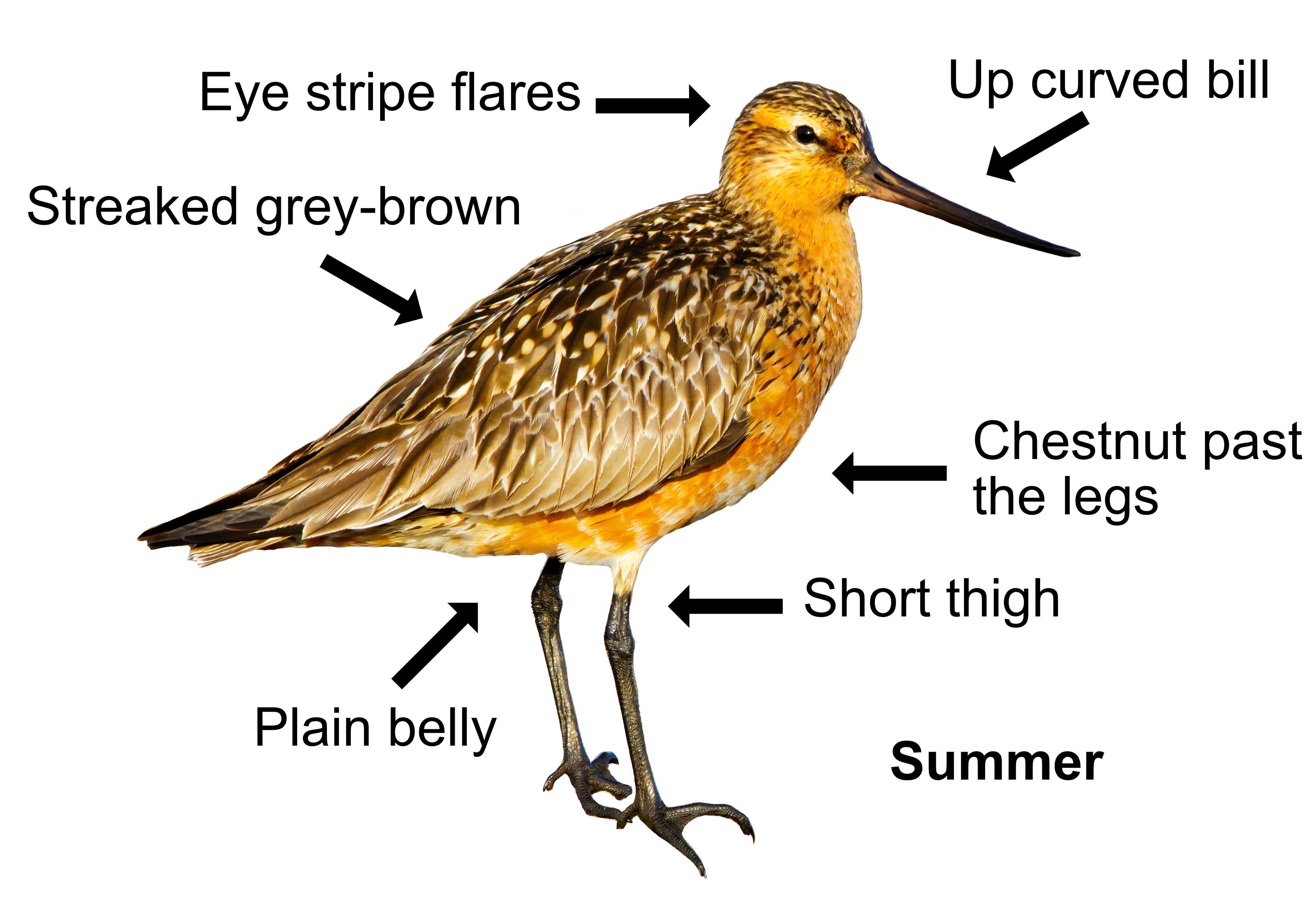
The Bar-tailed Godwit is another winter visitor, with hundreds of thousands passing through the UK on their way further south. About 43,000 stop here for winter between August and May. It is mainly found in large flocks on sandy estuaries or sheltered bays and is rarely seen inland. A few non-breeding Bar-tailed Godwits stay here all year. Bar-tailed Godwits rarely mix with Black-tailed Godwits as they like sandy as opposed to muddy areas to feed.
The Bar-tailed Godwit is shorter-legged than the Black-tailed, with a short thigh and a knee joint about a third of the way down. In summer plumage, it has a chestnut head and neck. The red extends past its legs under the tail and its belly is plain. Their back is a scaly brown and the red bill is noticeably up curved with a black tip. The pale eye stripe flares into a triangle behind the eye. In winter, they are streaked scaly grey-brown on their upperparts and paler underneath. When flying, there is no wing bar like a Black-tailed Godwit and their feet, being shorter, don’t stick out as much. They have a white rump and barred tail - giving them their name. They are generally silent, only making a nasal “kirruc kirruc” call when on their breeding grounds.
Bar-tailed Godwits often wade in deep water, feeding on insects, crustaceans, snails, molluscs, and worms by probing with their long bills, often dining with Knots and Dunlins for company. Occasionally, they will eat seeds and berries.

The Bar-tailed Godwit only breeds on the peat bogs and swamps of the high arctic in Scandinavia and Russia. The nest is a scrape on the ground. Dad does the lion’s share of incubating the 3-4 eggs which hatch after 22 days. The youngsters can feed themselves and become independent as soon as they can fly, with the whole family leaving the breeding ground soon afterwards. They do their moult between August and September, often after they have arrived here.
Bar-tailed Godwits are long distant migrants that depend heavily on places to stop for a rest. Many of these areas are being lost to land reclamation, construction of marinas, sea defences, and tourism, so these stopping sites are now being protected. During the winter, Bar-tailed Godwits often commute between the Wash on the east coast and the estuaries of northwest England, sometimes moving back and forth between the two overnight. The oldest ringed Bar-tailed Godwit lived to 26.
Their Latin name is ’limosa lapponica’ where ’limosa’ means ‘muddy’ and ’lapponica' refers to Lapland where it breeds. The English name ‘Godwit’ probably from the Old English ’god whit’, meaning ‘good creature’ as it was tasty to eat. In French, they know it as a ’barge rousse’ from its chestnut plumage.
A Bar-tailed Godwit set the world record for non-stop bird flight when it was tracked flying more than 12,000km from Alaska arriving in New Zealand 11 days later, having flown at speeds of up to 55mph!